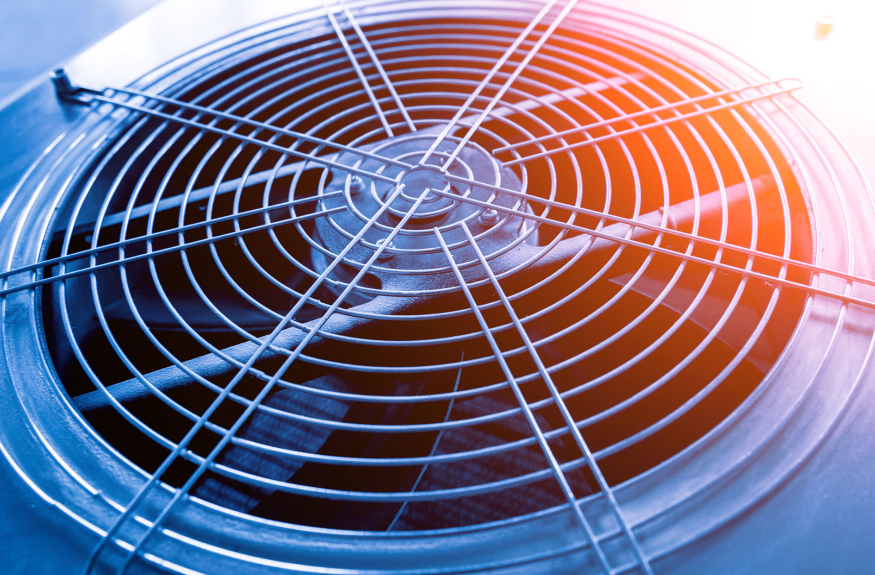The ROI of Ventilation: From Cost Center to Profit Center
In Healthy Buildings: How Indoor Spaces Drive Performance and Productivity, Joseph Allen and John Macomber argue that the “quantification of the benefits of a Healthy Building should become a critical part of landlord and tenant math.”[1] Which Healthy Building benefit do they believe has the most compelling return on investment for both landlords and tenants? Ventilation.
In a pro forma income statement of a theoretical $6 million gross revenue, 40-employee company, Allen and Macomber illustrate a win-win scenario for the landlord and the tenant, in which “the revenue gains from productivity, the cost savings from health, and the net added energy costs could allow the landlord to ask for a 10 percent increase in rent – and still leave room for the tenant to add more than $75,000 to its bottom line.”[2]
Coincidentally, Allen and Macomber published their book shortly before the onset of the COVID-19 pandemic, with relatively conservative assumptions about revenue gains from productivity and cost savings from health. Undoubtedly, these revenue gains and cost savings are understated by orders of magnitude in a world dominated by COVID-19, where ventilation is far more important and valuable.
Nevertheless, at the heart of Allen and Macomber’s argument is a provocative idea – ventilation is not just a cost center in real estate; it is a profit center as well.
Historically, ventilation has fallen under facilities and engineering budgets in real estate, with the HVAC system being a major capital asset on a building’s balance sheet and HVAC-related energy and service & maintenance spending being a major operating expense on a building’s income statement. Ventilation has largely been thought of as a cost center that does not directly add to the profitability of a building but still costs owners significant money to operate.
As a cost center, ventilation-related spending beyond a basic budgeted level needs to have a clear ROI to justify additional spend. Over the past several years, increasing the HVAC system’s energy efficiency has been one of the clearest ROI’s, reducing energy spending while also supporting sustainability through reduced carbon emissions. In this respect, financial and sustainability ROI are aligned, providing landlords with a double win particularly as ESG has become an increasingly important value driver in real estate.
Relative to Green Buildings, one of the major challenges limiting wider market adoption for Healthy Buildings has been the misalignment between health & safety ROI and financial ROI. Unlike Green Buildings, where improving the energy efficiency of ventilation also reduces energy costs and carbon emissions, Healthy Buildings are characterized by an inherent tension: increasing ventilation increases energy costs and carbon emissions.
Allen and Macomber justify the ROI of increased ventilation by arguing that the net added energy costs are proportionally small compared to the larger revenue gains from increased productivity and cost savings from health. Notably, these financial benefits accrue to tenants and the financial costs fall to landlords. But what financial benefits should landlords gain? Indirectly, higher revenues via higher rents, leasing and renewal rates, and ultimately asset values. In other words, ventilation must become a profit center rather than a cost center for landlord financial math to net out.
Thus, the central question is whether increased revenues to landlords from ventilation are theoretical or real. Prior to the pandemic, the Healthy Building paradigm had a compelling value proposition for tenants. However, the value proposition for landlords was arguably more tenuous and less proven, and thus faced its fair share of skepticism from owners who doubted how much tenants really valued ventilation, which if true leads to a breakdown in landlords’ financial math.
However, COVID-19 has changed the game by closing the gap between the perceived value of ventilation by tenants and the opportunity for realized value by landlords. The severity and duration of the pandemic has heightened public concerns about workplace safety, particularly relating to indoor air quality, and dramatically increased public awareness of the importance of ventilation in combating respiratory infections, in addition to vaccination, testing, and masking.
How important? No cognizant authority ignores the strong relationship between ventilation and exposure risk to airborne pathogens like SARS-CoV-2, influenza and the common cold. 50 years of research going back to original work by Wells and Riley have documented this relationship and contemporary bodies all have guidance on ventilation, including the WHO, CDC, ASHRAE and the EPA. Critically, polling data indicates the public increasingly appreciates the crucial role of ventilation in infection control, as well as broader benefits for cognition, performance, and productivity.
While COVID-19 represents an inflection point, landlords will only realize financial value if they invest and validate the performance of their ventilation systems and if both landlord brokers and tenant rep brokers clearly, compellingly, and credibly communicate the performance of these systems and the associated health, safety & wellness value to tenants.
Which leads to two critical implications for landlords and brokers.
First, landlords will need to develop building- and portfolio-level performance verification and management programs for ventilation that integrate health and safety KPI’s in addition to traditional cost-centric KPI’s, that steer capital and operating budgets to high value opportunities, and that underpin robust tenant education and communications, even more powerfully when substantiated by respected independent science-based organizations.
Second, brokers will need to effectively market ventilation to tenants as a valuable building amenity directly linked to health, safety & wellness. While tenants perceive the value of ventilation now more than ever, brokers will still need to sell its value and overcome the inherent challenge of ventilation and indoor air quality being less visible and tangible relative to other more cosmetic but less valuable amenities in order for tenants to ultimately pay up and for landlords’ value to be realized.
With ventilation, COVID-19 has created a once-in-a-generation opportunity and risk for landlords. Those who talk the talk and walk the walk stand to win big; those who don’t risk losing big.
[1] Joseph Allen and John Macomber, Healthy Buildings: How Indoor Spaces Drive Performance and Productivity. Harvard University Press. 2020. p. 70.
[2] Ibid, p. 69.
This is sponsored content from SafeTraces.










